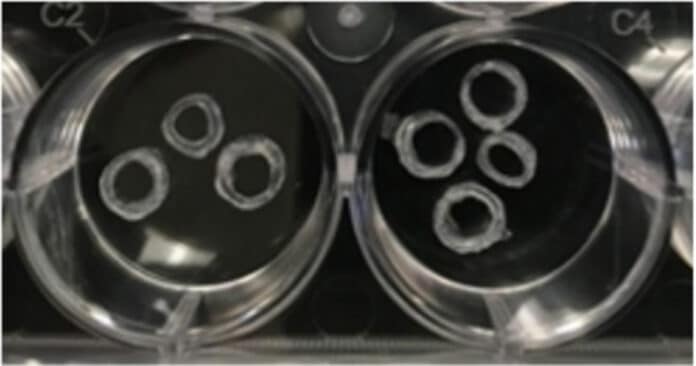The development and attachment of soft tissues to the implant surface is essential for the success of dental implants. Strontium, a bone-seeking element that increases bone density and strength, has been demonstrated to assist soft tissue function in earlier studies by UB researchers.
Strontium was found to promote the function of fibroblasts.
In a new study, a team of University at Buffalo researchers has developed a new strontium-loaded scaffold that can be personalized to fit any size dental implant and could help improve healing and tissue attachment in patients. Even loaded at low concentrations, scientists discovered that strontium promotes wound healing by stimulating gingival fibroblast activity.
Lead investigator Michelle Visser, Ph.D., associate professor of oral biology in the UB School of Dental Medicine, said, “Scaffold materials have been explored to promote bone and skin wound healing, but adaptations for the oral cavity are limited. These novel scaffolds represent a system for effective strontium release in the oral cavity.”
The scientists have created reusable, ring-shaped templates and moulds to create the scaffolds, which are porous structures that support and direct cell growth. The flexible hydrogel scaffolds are infused with a range of strontium concentrations that are released in an initial burst over 24 hours, followed by a steady dosage over four days with minimal toxicity.
Tested in the laboratory, the strontium-loaded scaffolds increased the cellular activity of isolated gingival fibroblasts cells, while the hydrogel scaffold alone had little effect on the cells.
Journal Reference:
- Shahad Bakheet Alsharif et al. Strontium-loaded hydrogel scaffolds to promote gingival fibroblast function. Journal of Biomedical Materials Research. DOI: 10.1002/jbm.a.37439
